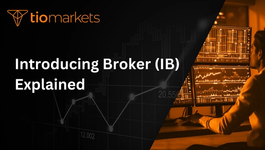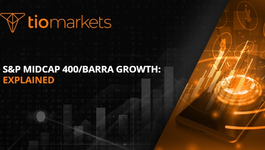Boom and bust cycle: Explained | TIOmarkets
BY TIOmarkets
|July 1, 2024In the world of trading, understanding economic cycles is crucial to making informed decisions. One such cycle that traders must be aware of is the boom and bust cycle. This cycle, characterized by periods of economic expansion (boom) followed by periods of economic contraction (bust), plays a significant role in the performance of financial markets. In this glossary entry, we will delve into the intricacies of the boom and bust cycle, its impact on trading, and strategies traders can utilize to navigate these cycles effectively.
The boom and bust cycle is a key concept in economics and trading. It refers to the fluctuations in the economic activity that an economy experiences over time. These fluctuations are usually characterized by expansion (boom) and contraction (bust) phases, which affect various aspects of the economy, including employment, consumer spending, and investment. Understanding the boom and bust cycle can help traders anticipate market trends and make informed trading decisions.
Understanding the Boom and Bust Cycle
The boom and bust cycle is a fundamental concept in macroeconomics. During a boom, the economy grows, businesses thrive, employment rates rise, and consumer confidence and spending increase. This period of economic expansion is often accompanied by a bull market in stocks, where prices are rising or are expected to rise. However, booms can lead to overheating, where economic activity is unsustainable, often resulting in a bust.
A bust, on the other hand, is a period of economic contraction. During a bust, the economy shrinks, businesses struggle, unemployment rates rise, and consumer confidence and spending decrease. This period of economic contraction is often accompanied by a bear market in stocks, where prices are falling or are expected to fall. Understanding these phases and their impact on the economy and financial markets is crucial for successful trading.
The Boom Phase
The boom phase is characterized by economic expansion. During this phase, businesses are generally doing well, employment rates are high, and consumers are confident and spending money. This positive economic activity often leads to increased demand for goods and services, which can drive up prices and lead to inflation. In the financial markets, a boom phase is often associated with a bull market, where stock prices are rising.
However, the boom phase can also lead to economic overheating. This happens when the economy grows too quickly, leading to excessive inflation and creating economic imbalances. Overheating can be dangerous because it can lead to an economic bubble, where asset prices rise significantly above their intrinsic value. When the bubble bursts, it can trigger a bust phase.
The Bust Phase
The bust phase is characterized by economic contraction. During this phase, businesses may struggle, employment rates can drop, and consumer confidence and spending may decrease. This negative economic activity often leads to decreased demand for goods and services, which can drive down prices and lead to deflation. In the financial markets, a bust phase is often associated with a bear market, where stock prices are falling.
However, the bust phase can also create opportunities for traders. For example, falling asset prices can create buying opportunities for traders who believe that the market will eventually recover. Additionally, traders can profit from a bear market by short selling, which involves selling borrowed assets with the expectation of buying them back at a lower price.
Impact of the Boom and Bust Cycle on Trading
The boom and bust cycle has a significant impact on trading. During a boom, traders can benefit from rising asset prices and increased market activity. However, they must also be aware of the risk of economic overheating and the potential for a market bubble. During a bust, traders may face challenges due to falling asset prices and decreased market activity. However, they can also find opportunities to profit from a bear market.
Understanding the boom and bust cycle can help traders anticipate market trends and make informed trading decisions. For example, during a boom, traders might focus on growth stocks, which are companies that are expected to grow at an above-average rate compared to other companies in the market. During a bust, traders might focus on value stocks, which are companies that are considered undervalued compared to their intrinsic value.
Trading Strategies During a Boom
During a boom, traders can benefit from rising asset prices and increased market activity. One common strategy is to buy and hold, which involves buying stocks or other assets and holding them for a long period of time to benefit from their long-term growth. This strategy can be effective during a boom, as asset prices are generally rising.
Another strategy is momentum trading, which involves buying assets that have been increasing in price and selling them when their price starts to decline. This strategy can be effective during a boom, as asset prices are generally rising and there is often a positive market sentiment. However, traders must be careful to avoid buying assets that are overvalued, as this can lead to losses if a market bubble bursts.
Trading Strategies During a Bust
During a bust, traders may face challenges due to falling asset prices and decreased market activity. However, there are strategies that can be effective during this phase. One such strategy is short selling, which involves selling borrowed assets with the expectation of buying them back at a lower price. This strategy can be profitable during a bust, as asset prices are generally falling.
Another strategy is value investing, which involves buying stocks or other assets that are considered undervalued compared to their intrinsic value. This strategy can be effective during a bust, as asset prices are often undervalued due to negative market sentiment. However, traders must be careful to avoid value traps, which are stocks that appear to be undervalued but are actually not due to underlying problems with the company.
Conclusion
The boom and bust cycle is a fundamental concept in economics and trading. Understanding this cycle and its impact on the economy and financial markets can help traders make informed decisions and develop effective trading strategies. While the boom and bust cycle can present challenges, it can also create opportunities for traders who understand its dynamics and can adapt their strategies accordingly.
Whether you're a novice trader just starting out or an experienced trader looking to refine your strategies, understanding the boom and bust cycle is crucial. By understanding this cycle, you can better anticipate market trends, manage your risk, and seize opportunities to maximize your trading success.
Start Trading Through the Cycles with TIOmarkets
Ready to apply your understanding of the boom and bust cycle to real-world trading? Join TIOmarkets, a top-rated forex broker with over 170,000 accounts opened across more than 170 countries. Trade over 300 instruments across 5 markets, including Forex, indices, stocks, commodities, and futures, all with low fees. Enhance your trading skills with our comprehensive educational resources and step-by-step guides. Take the first step towards maximizing your trading potential by creating a trading account today.

Risk disclaimer: CFDs are complex instruments and come with a high risk of losing money rapidly due to leverage. You should consider whether you understand how CFDs work and whether you can afford to take the high risk of losing your money. Never deposit more than you are prepared to lose. Professional client’s losses can exceed their deposit. Please see our risk warning policy and seek independent professional advice if you do not fully understand. This information is not directed or intended for distribution to or use by residents of certain countries/jurisdictions including, but not limited to, USA & OFAC. The Company holds the right to alter the aforementioned list of countries at its own discretion.
Join us on social media

Behind every blog post lies the combined experience of the people working at TIOmarkets. We are a team of dedicated industry professionals and financial markets enthusiasts committed to providing you with trading education and financial markets commentary. Our goal is to help empower you with the knowledge you need to trade in the markets effectively.





